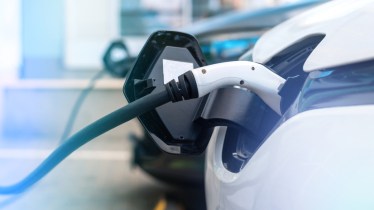By Yogesh Bhatia
The electric vehicle (EV) industry experienced rapid growth and innovation in the year 2023.A wealth of developments took place and the demand for these new-age vehicles soared to unprecedented heights. In India, EV sales grew by around 47% to reach a phenomenal 1.5 million in 2023. A bright year, indeed! Now, with some steps already taken into the fresh In 2024, we expect to witness many more positive, significant shifts in the EV market.
Surely, a wider range of EVs would be introduced this year, which would give consumers more options to choose from. These forthcoming EVs are expected to be built with better technology and features, promising to offer a longer range than their predecessors. Many automakers have already declared plans to launch their upcoming EV models, and the market is gearing up for the same.
Moving ahead, in this rapidly evolving landscape of EVs, technology is certain to play an even bigger role. Market Players are already pushing their boundaries and integrating various innovative techniques such as advanced driver-assistance systems and autonomous driving technologies. Solar panels are being integrated into some EVs to provide additional energy. Looking ahead, a deeper integration of AI, ML and IoT, could revolutionize these vehicles by enabling efficient monitoring of daily commutes and even providing prompt charging suggestions. The safety and operational efficiency of these vehicles are also likely to be enhanced, which would further raise the bar of EVs, making them more attractive to consumers.
Moreover, battery technology has been a prime focus in the EV industry, and this trend will continue to gain momentum in 2024. Manufacturers are investing heavily in research and development to improve the energy density, charging speed and lifespan of batteries. These innovations are further expected to bring down the cost of EV batteries, which form up to 40% of the total EV cost. Ultimately, the total cost of EVs could go down, which would be another phenomenal victory point and a great growth opportunity for the EV industry.
With the above said, a key challenge that has been obstructing the EV journey and has been coming in the way of the vehicles’ rapid adoption is the limited availability and accessibility of charging stations. Together, the government and the industry are committed to solving this problem and we can expect to see a significant expansion of charging infrastructure this year. Offering subsidies for the installation of charging stations and the advancement of fast-charging technology could prove vital in instilling confidence among EV consumers. Once the network of quality EV charging solutions is established, it will enable the industry to overcome one of its most significant barriers to growth.
Furthermore, another key area where we expect to see significant developments this year is in the design of EVs. The modern consumers of today, especially the youth, are drawn to vehicles with sleek, compact and visually attractive designs. They look for modern features, neat and spacious interiors and overall elegance, which can express their personality and lifestyle choices. Taking note of these consumer expectations, automakers are now gradually moving away from conventional vehicle designs to create new-age appearances, those that are minimalist, elegant and visually appealing. Light-weight materials are being used in the manufacturing process, which not only reduces the weight of the vehicle but also improves its range and battery efficiency.
Automakers are also integrating digital technology into vehicle design by introducing features such as interactive displays, connectivity features, advanced infotainment systems, and more. Consequently, we anticipate numerous innovations in vehicle design this year, wherein aesthetics will seamlessly merge with performance and functionality to enhance the overall appeal of EVs.
With the above said, the bigger push will come from the government, which is already being strong on its mandate of promoting a greener nation. Government support in the form of incentives and subsidies is expected to greatly propel the industry and contribute to its market growth. As per a report, the Indian EV market size is expected to grow at a CAGR of 68.48% between 2023 and 2028.
Thus, with a range of robust plans and innovative initiatives on the horizon, 2024 holds great promise and excitement for the EV industry.
The author is the MD & CEO of LML.
Disclaimer: The views and opinions expressed in this article are solely those of the original author. These views and opinions do not represent those of The Indian Express Group or its employees.
